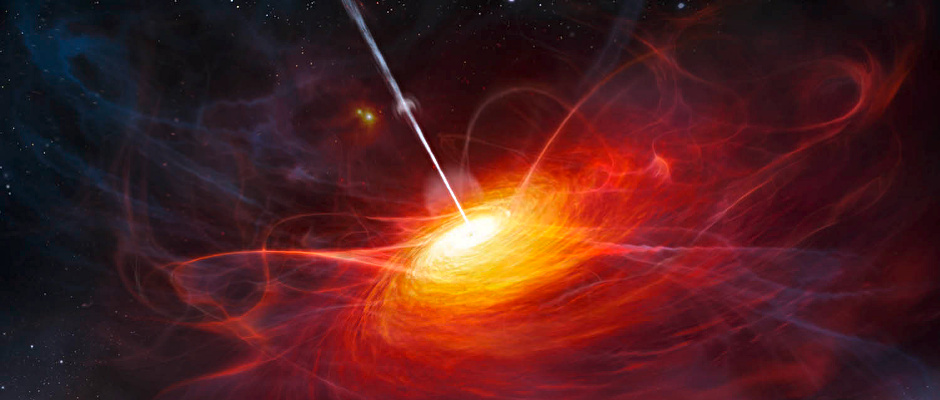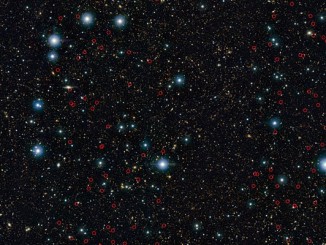
The quasar was found at a redshift of z = 6.30. This is a measurement of how much the wavelength of light emitted from it that reaches us on Earth is stretched by the expansion of the universe. As such, it can be used to calculate the quasar’s age and distance from our planet. A higher redshift means larger distance and hence looking further back in time.
At a distance of 12.8 billion light-years from Earth, this quasar was formed only 900 million years after the Big Bang. Named SDSS J0100+2802, studying this quasar will help scientists understand how quasars evolved in the earliest days of the universe. There are only 40 known quasars that have a redshift of higher than 6, a point that marks the beginning of the early universe.
“This quasar is very unique. Just like the brightest lighthouse in the distant universe, its glowing light will help us to probe more about the early universe,” said team-leader Xue-Bing Wu of Peking University and the Kavli Institute of Astronomy and Astrophysics.
With a luminosity of 420 trillion that of our own Sun’s, this new quasar is seven times brighter than the most distant quasar known (which is 13 billion light-years away). It harbours a black hole with mass of 12 billion solar masses, proving it to be the most luminous quasar with the most massive black hole among all the known high-redshift quasars.
The team developed a method of detecting quasars at redshifts of 5 and higher. These detections were verified by the 6.5-metre Multiple Mirror Telescope (MMT) and 8.4-metre Large Binocular Telescope (LBT) in Arizona; the 6.5-metre Magellan Telescope at Carnegie’s Las Campanas Observatory in Chile; and the 8.2-metre Gemini North Telescope in Hawaii.
“This quasar is a unique laboratory to study the way that a quasar’s black hole and host galaxy co-evolve,” Beletsky said. “Our findings indicate that in the early universe, quasar black holes probably grew faster than their host galaxies, although more research is needed to confirm this idea.”



